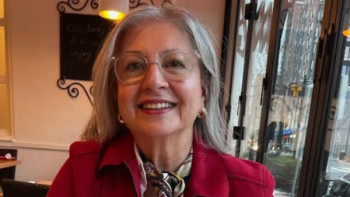
Study Shows Adolescent and Young Adult Cancer Survival Rates Improved, Disparities Remain
Although survival among AYAs with cancer has improved over recent decades, disparities within the severity of stage, race/ethnicity and socioeconomic status are still just as prevalent.
With dramatic increases in survival among adolescents and young adults (AYAs) has come patterns of disparities by race, ethnicity and socioeconomic status, according to a study published in JNCI Cancer Spectrum.
“This highlights that continued research is required in this vulnerable age group,” lead study author Dr. Diana Moke, an attending physician at the Children’s Hospital, Los Angeles and assistant professor of pediatrics at the Keck School of Medicine of USC, said in a press release.
“This research is necessary to improve survival in certain cancer types that have not shown any recent progress, find novel therapies for advanced stage disease in all cancer types and ensure that survival improvements reach all young patients, regardless of race/ethnicity or socioeconomic status,” she added.
Previous Research
In 2006, a report showed that from 1977 to 1997, AYAs in the Surveillance, Epidemiology and End Results (SEER) program had an “alarming lack of improvement” in survival compared with other age groups, according to the study authors.
With this, efforts were made in the years thereafter to improve outcomes for this patient population, including:
- characterization of survival and toxicity disparities
- clarification of tumor biology
- introduction of more effective therapies
- improvements in AYA participation in clinical trials,
- establishment of an AYA Oncology Discipline Committee in the Child Oncology Group and some adult cooperative oncology groups in the US
- emergence of AYA oncology as a discipline in the field
However, these improvements may not have been added to all subgroups. “With 1 million new cases of AYA cancer diagnosed worldwide each year with variable race/ethnicity, socioeconomic status and available resources, a better understanding of factors that affect cancer survival in this vulnerable population is needed,” the researchers wrote.
Survival Trends for AYAs
Therefore, the recent study aimed to provide a current, comprehensive and transparent description of AYA cancer survival. With this, the researchers hypothesized that survival has improved in certain cancer types, such as Kaposi sarcoma, leukemia and lymphoma, and in particular subgroups like non-Latino whites and those with higher socioeconomic status, while survival disparities have persisted for blacks and those with lower socioeconomic status.
The study included over 225,000 AYA patients diagnosed with a first cancer from 1988 to 2000 and from 2001 to 2014.
For all cancers combined, survival improvement was at least as large among AYAs as it was in younger children and adult patients — with males showing the largest survival improvement. Evaluating patients from 2001 to 2014, AYA showed a lowered risk for death compared with those from 1988 to 2000.
Survival among AYAs improved for 15 of the 22 cancer sites evaluated, with the greatest improvements occurring in those with Karposi sarcoma, chronic myeloid leukemia and non-Hodgkin lymphoma.
Subgroups that demonstrated worsening trends in survival included black AYAs with bone/soft tissue sarcoma; 20- to 24-year-old women with cervical cancer; and AYAs of low socioeconomic status with cervical cancer.
The strongest predictor of death was cancer stage — which was higher for blacks, Asian/Pacific islanders and Latino whites compared with non-Latina whites; and for low socioeconomic status versus high. Overall, survival disparities by stage, race/ethnicity and socioeconomic status worsened over time.
“Even though the historical gap in AYA survival improvement has been closed with the advent of effective treatment for HIV/AIDS-related cancers and increased focus on AYA cancer, AYAs remain a vulnerable population with unique age-related challenges,” the researchers wrote.
“Future directions include in-depth analyses and lack of survival improvement, and to determine effective interventions for improving outcomes in certain cancer sites, in late-stage disease and among socio-demographically disadvantaged subgroups.”





